Submitted by WA Contents
Zeller & Moye built private residence composed of interlocked timber cabins among pine trees
Germany Architecture News - Jul 10, 2020 - 15:59 6544 views

Mexico and Berlin-based architecture studio Zeller & Moye has built a private residence hidden among pine trees in Klein Köris, eastern Germany.
Called Koeris House, the 130-square-metre, situated on a plot near a lake in close proximity to Berlin, the house is entirely made of timber and its volumes are interlocked each other to provide a continuous circulation inside.
The house was completed in spring 2020 and is currently inhabited by the owners.
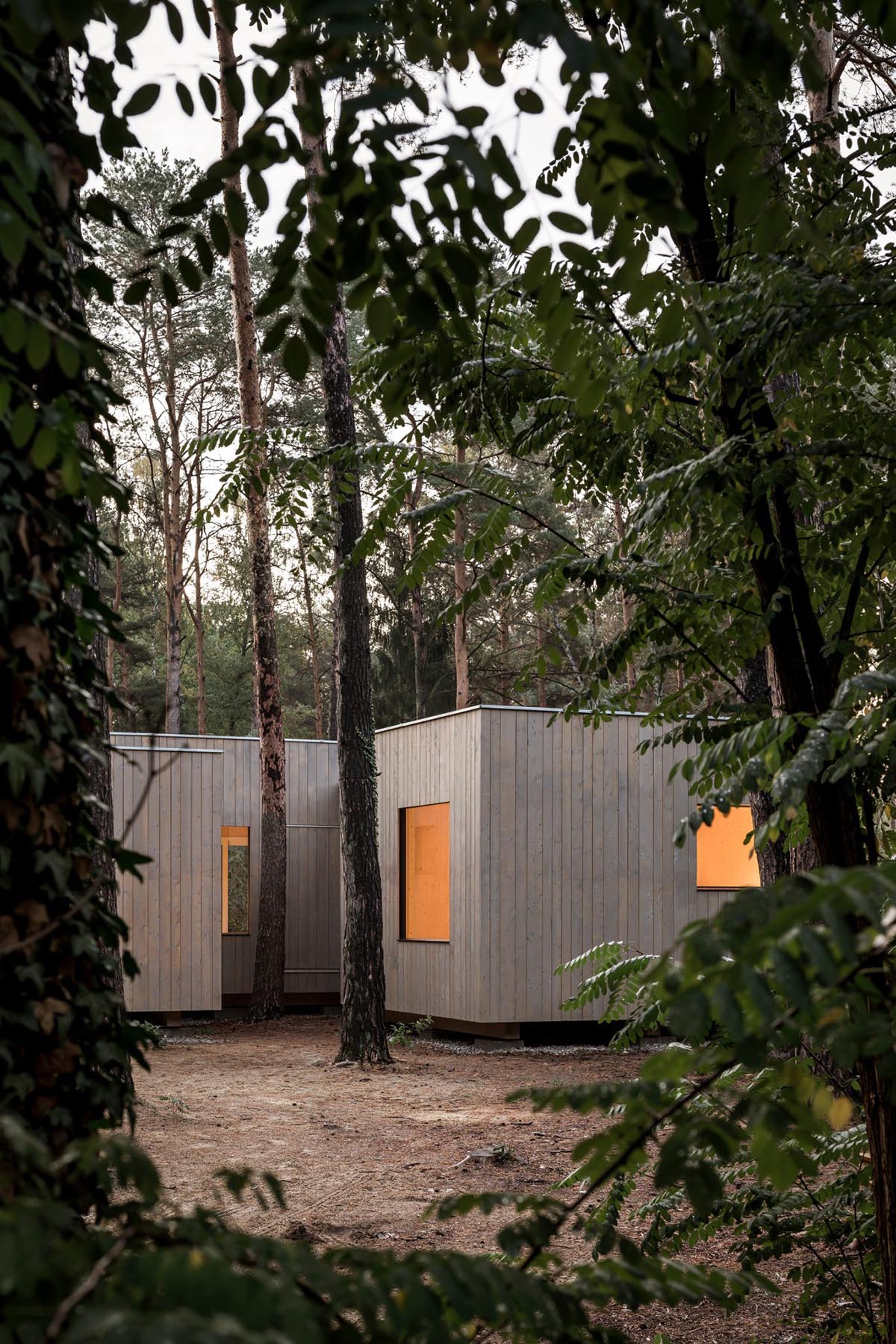
The five-volume cabins at first sight are perceived as separate volumes, but as long as a visitor comes closer, it is understood that they are attached each other and the residence is a single volume.
In order to reduce the footprint of residence and avoid contact with the seasonally damp soil, the volumes are raised from the ground and the architects decided the irregular shape of the house according to the position of existing trees.
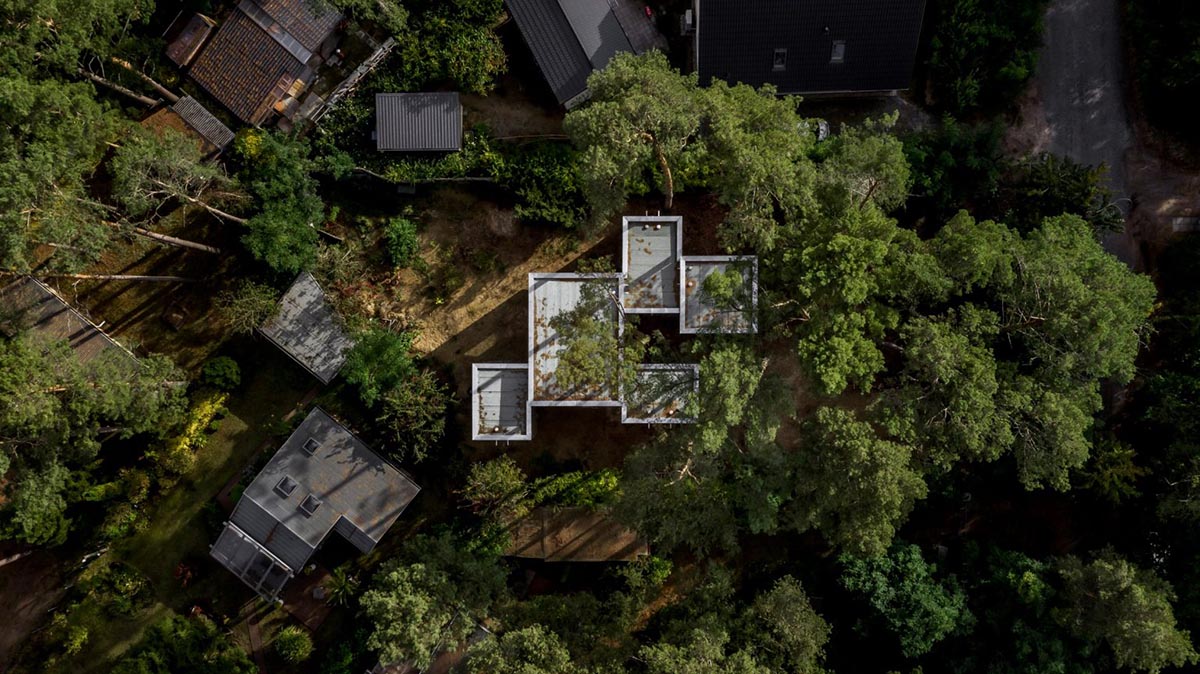
"Five boxes are arranged in a staggered layout with the individual rooms overlapping each other allowing for connections between them. The shifts in the floor plan create small patios and green niches along the building‘s perimeter," said Zeller & Moye.
"Some of these alcoves are sheltered from wind or hidden from views, others capture the sun and thus create pleasant microclimates."
"The recesses give the residents various opportunities to use the exterior as inhabitable open air spaces in dialogue with the internal rooms, proposing a new relationship with nature where indoors and outdoors blend into each other."
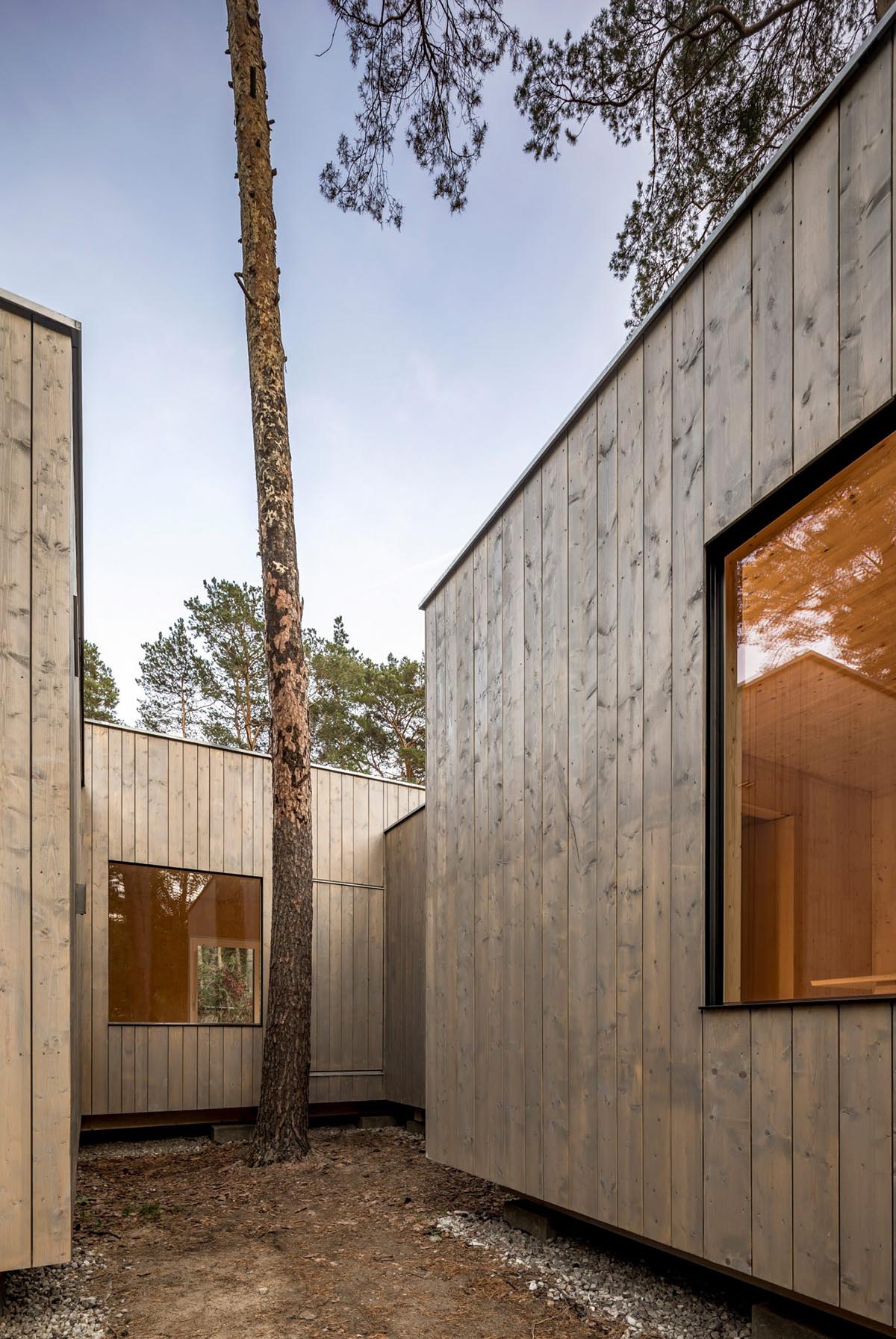
The single-storey residence is organised as a cluster of spaces of various clear heights – 2.4 m, 2.7 m and 3.1 m – offering a variety of private areas and an open shared space, adding up to a total of 130 square meters.
Offering a generous and proportioned central space at the heart of the house, the owners are able to come together, cook and eat around a large table, or rest in front of the fireplace.
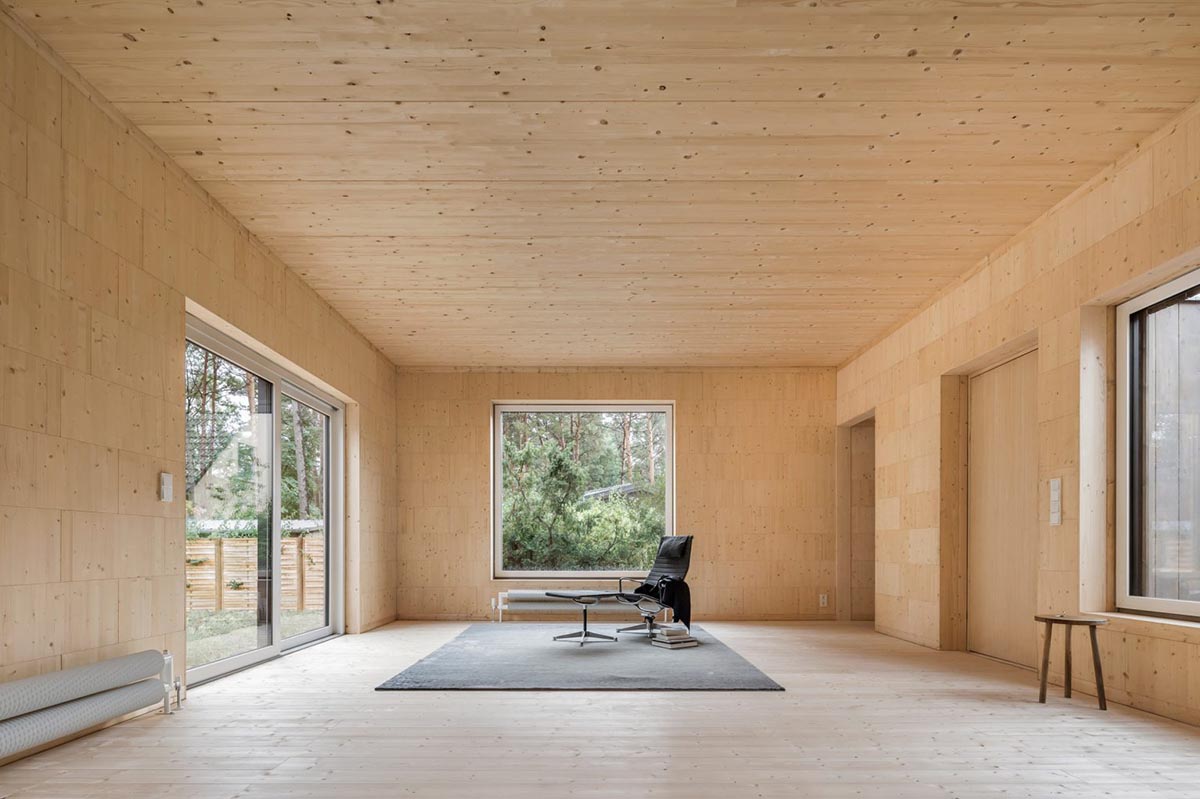
The residence includes three flexible rooms connecting to the central space distributed on both sides. The house can also be adapted to the future needs by the owners depending on what is required at the time - they can be used as a bedroom, studio, workshop or guest room.
Their location at opposite ends of the house allows for good acoustic separation, therefore even at nighttime sleeping and working can occur simultaneously.
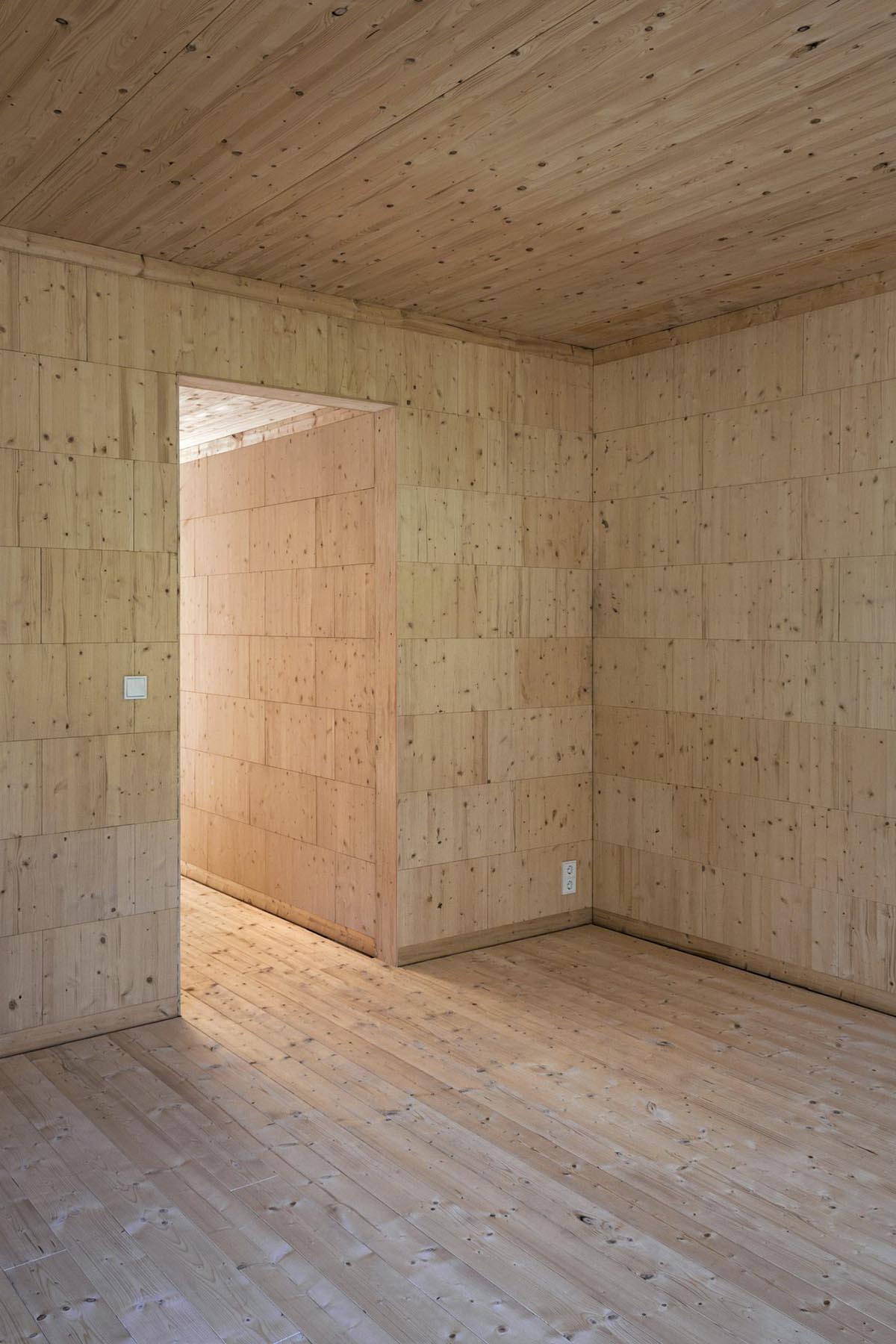
In the interiors, the architects used pale wood in walls, floors and ceilings. "Large windows in an irregular distribution interrupt the calm interior with scenic views of the woods, that at times may appear as landscape paintings," added the studio.
"Connecting the interior with the surrounding scenery, some windows are specifically positioned to create framed views of the nearby trees."
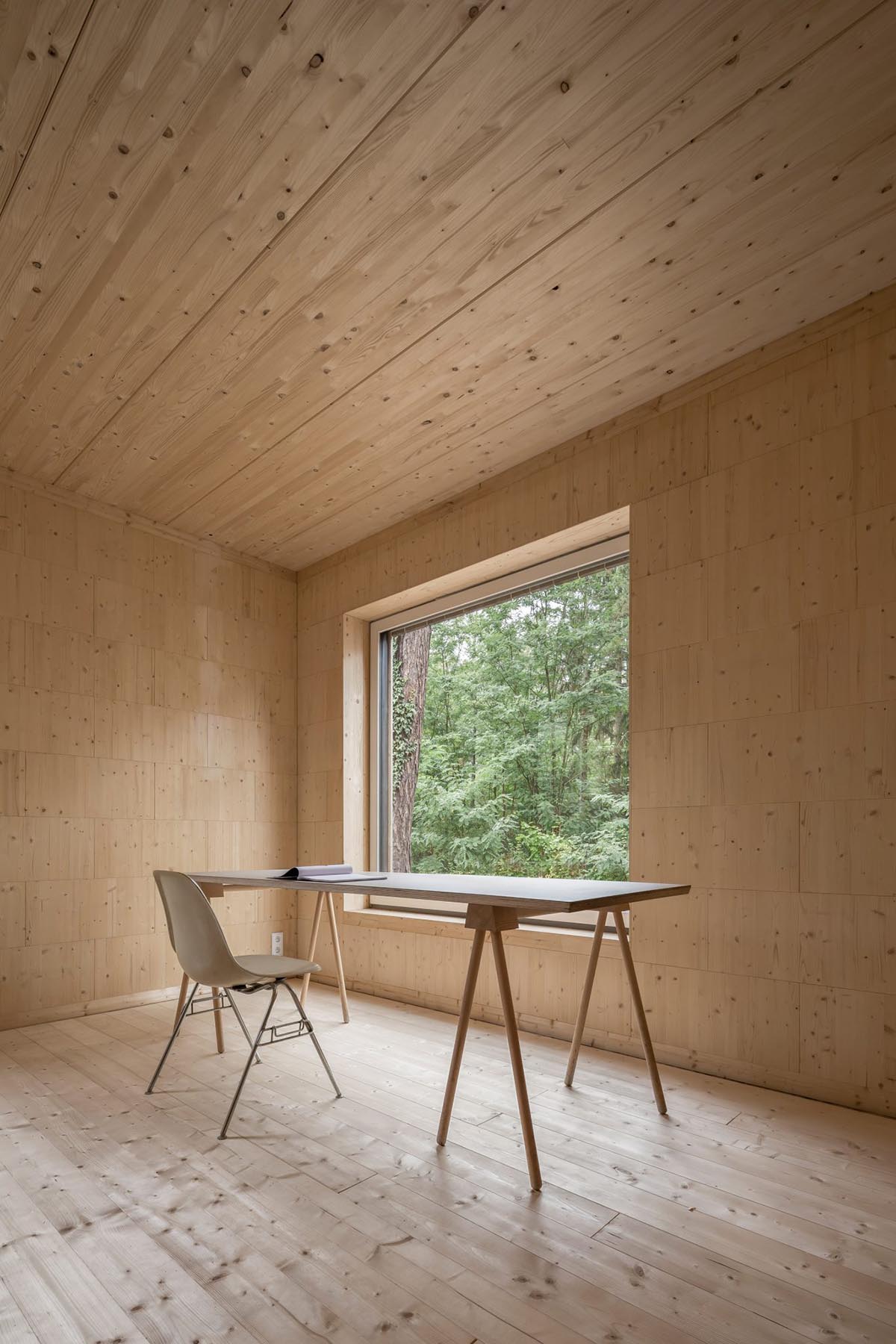
Four entrances were arranged to connect the house with the garden. The main entrance is hidden within the central patio opening up directly into the living space.
A secondary door connects the bathroom with the garden leading up to an outdoor shower that is tucked away in a niche covered by vegetation.
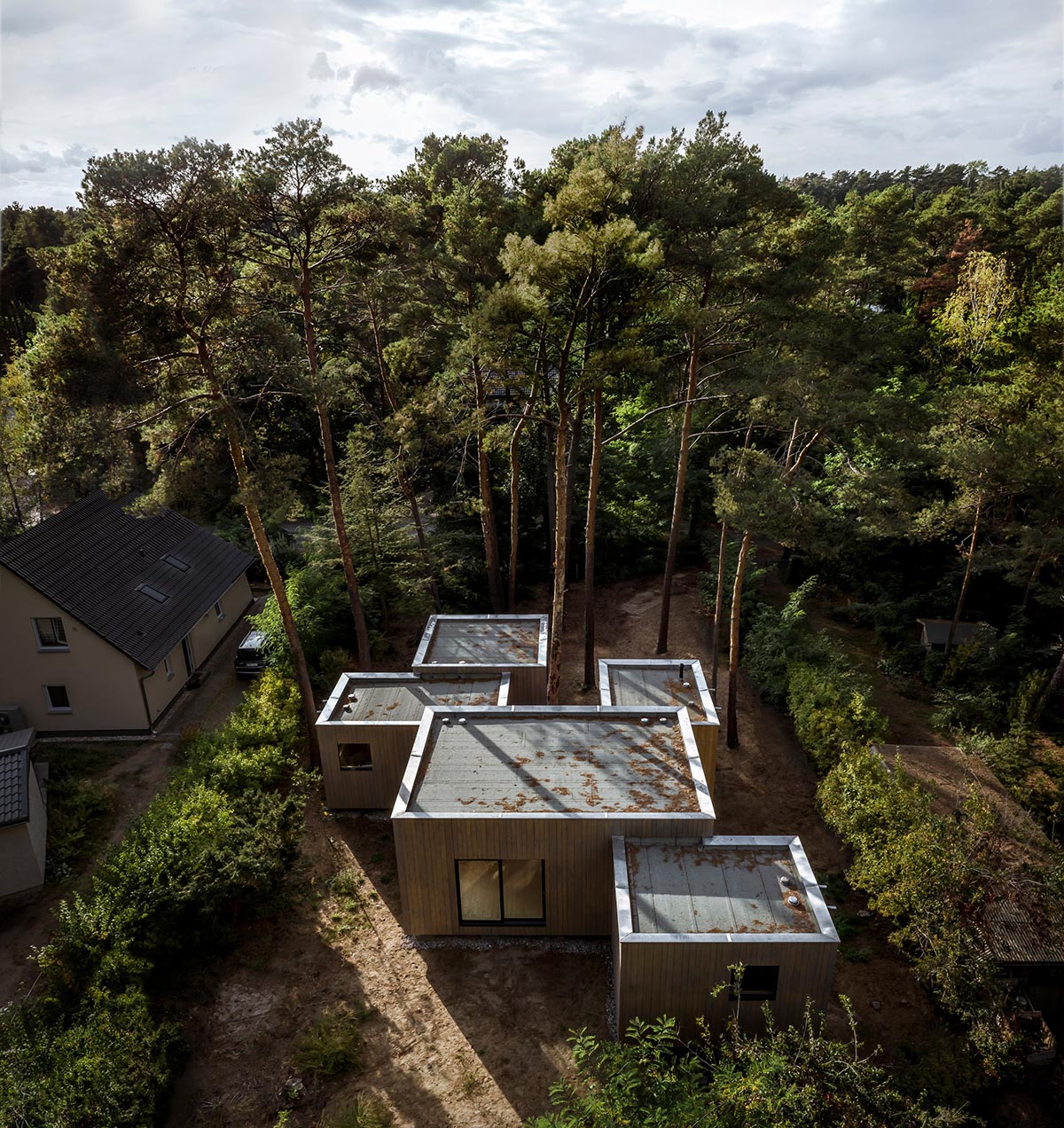
As the architects maintained the existing pine trees at the site, the house had to not only be designed around the tree trunks but also had to avoid any harm to the tree's horizontal root system.
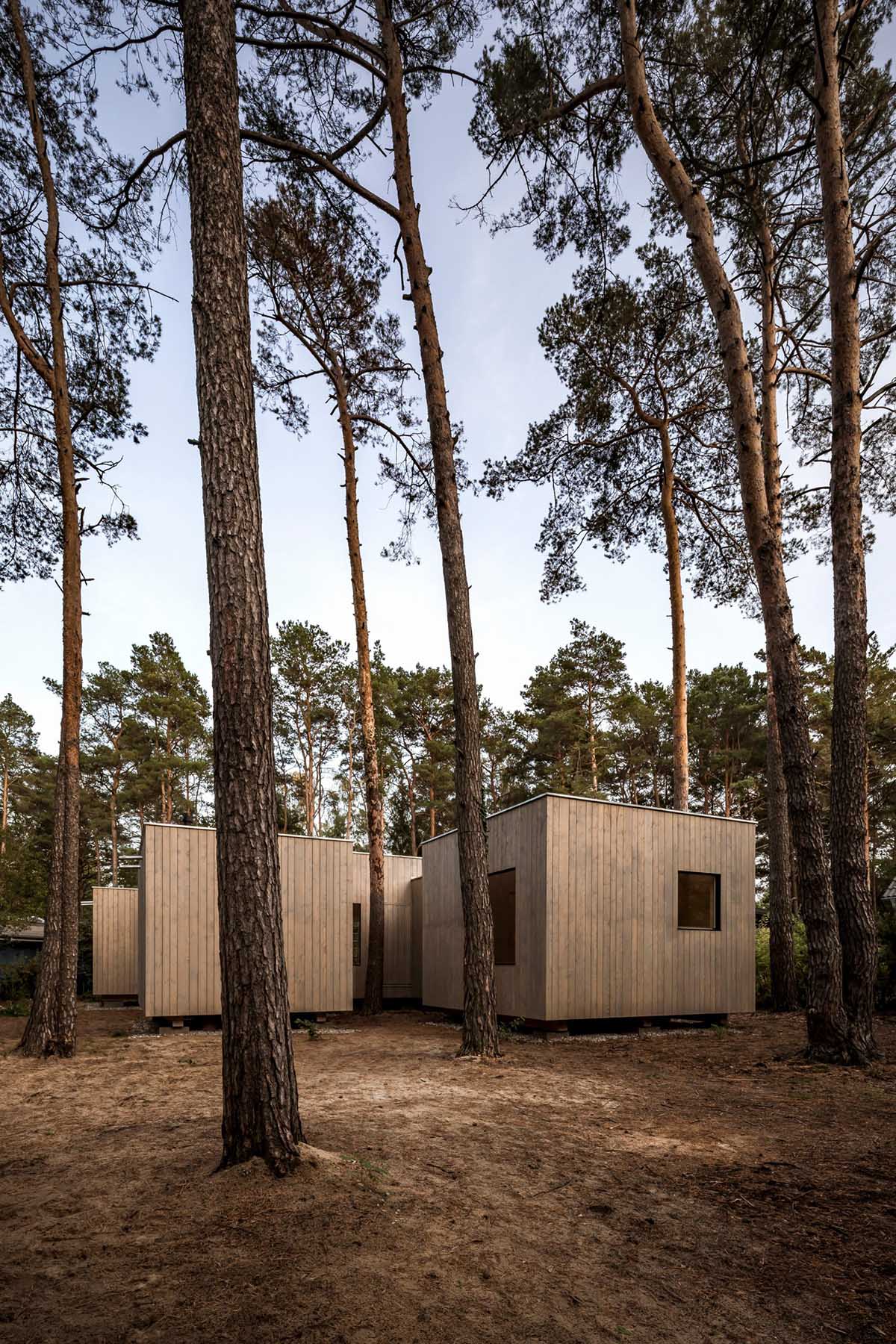
"The construction was therefore raised from the ground minimising the footprint on the land. A light wood construction rests on individual concrete foundations that are laid out on a grid allowing for the roots to grow around them," the architects explained.
The studio also stressed that "thanks to the chosen wood construction it was possible to deliver the house at a low budget."
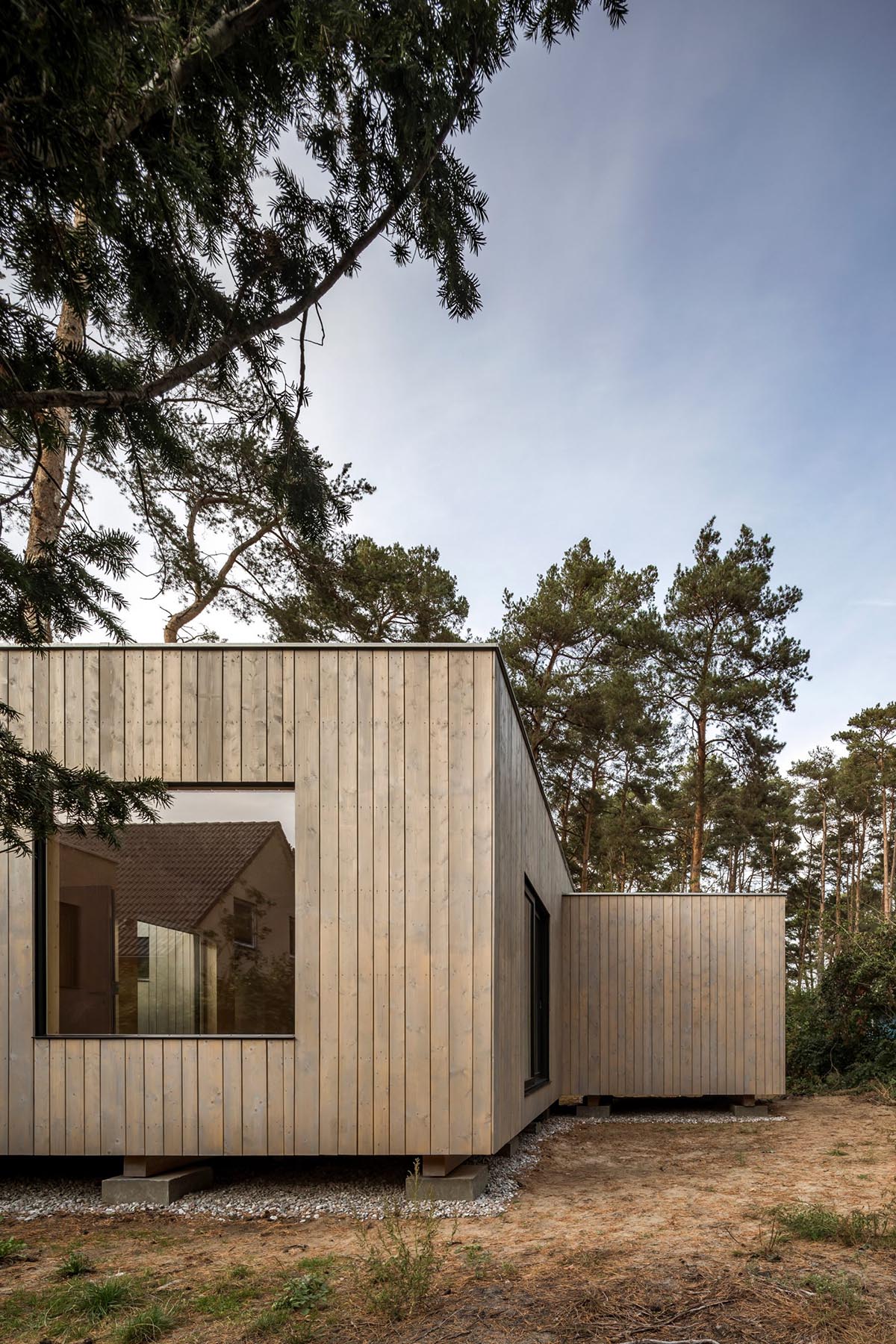
"The building is based on environmentally sustainable construction principles including the use of renewable resources such as solid wood floors and ceilings, a modular wall system of wooden building blocks, and wood fiber based insulation."
The façade is made of vertical slats of regional spruce wood that thoroughly wrap around the house as well as the three entrance doors. Large fixed glazing in combination with smaller operable windows for natural ventilation allow for light-flooded interior spaces.
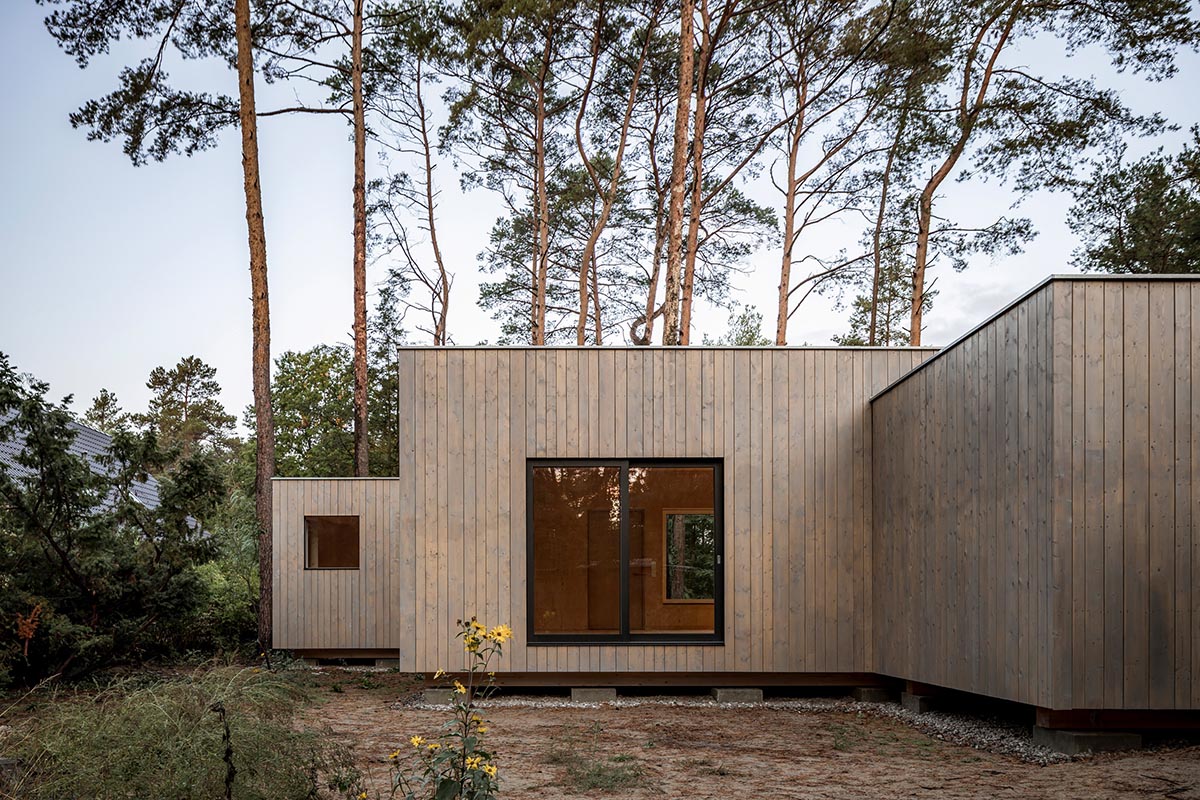
The internal climate of the house provides is comfortable than a regular construction of cementitious materials due to wood's natural capability of temperature and humidity regulation.
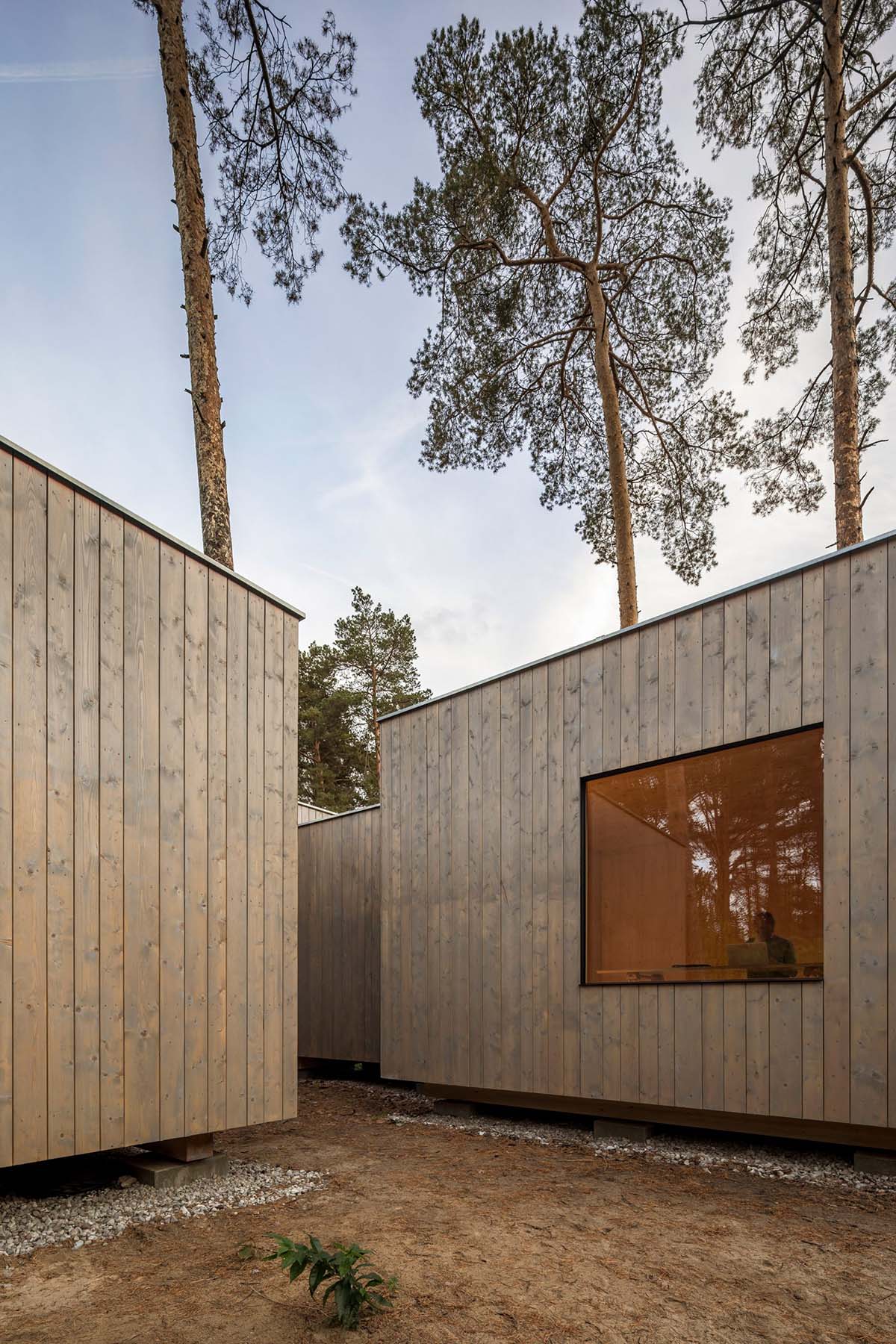
"During the cold winter months, the exposed wood surfaces are enjoyable to the touch and contribute to a warm interior by reflecting the heat. A wood-fired stove provides comfortable radiant heat based on a renewable energy source, while a biogas boiler provides general heating to all rooms."
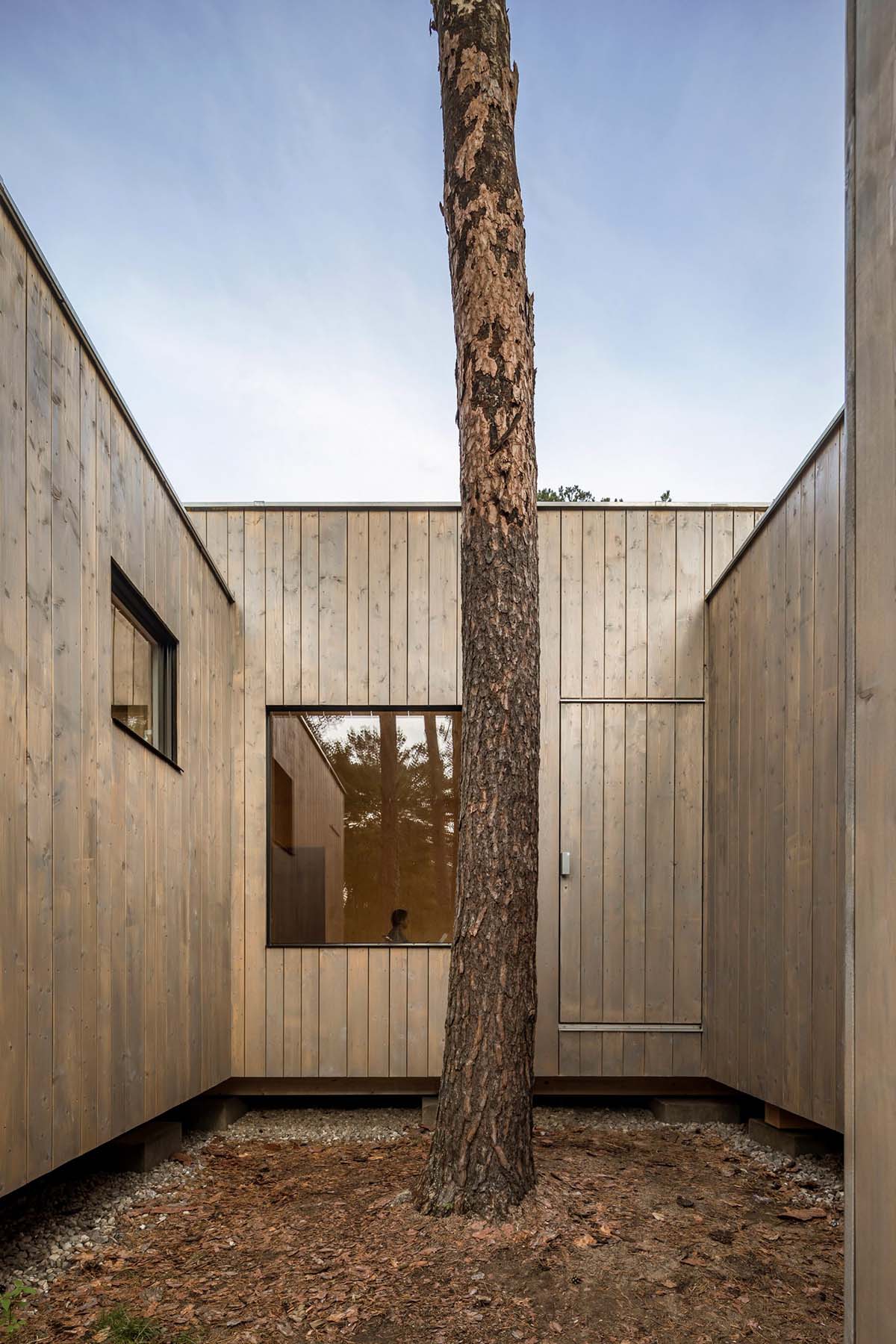
By considering environmental friendly solutions, the studio installed a small sewage plant with biological treatments on the lot, cleaning all waste waters of the house before releasing the clean water back into nature.
There will be a second phase for the residence, vegetation will be planted on the roof, further increasing the insulation of the building and contributing to the land's eco-system.
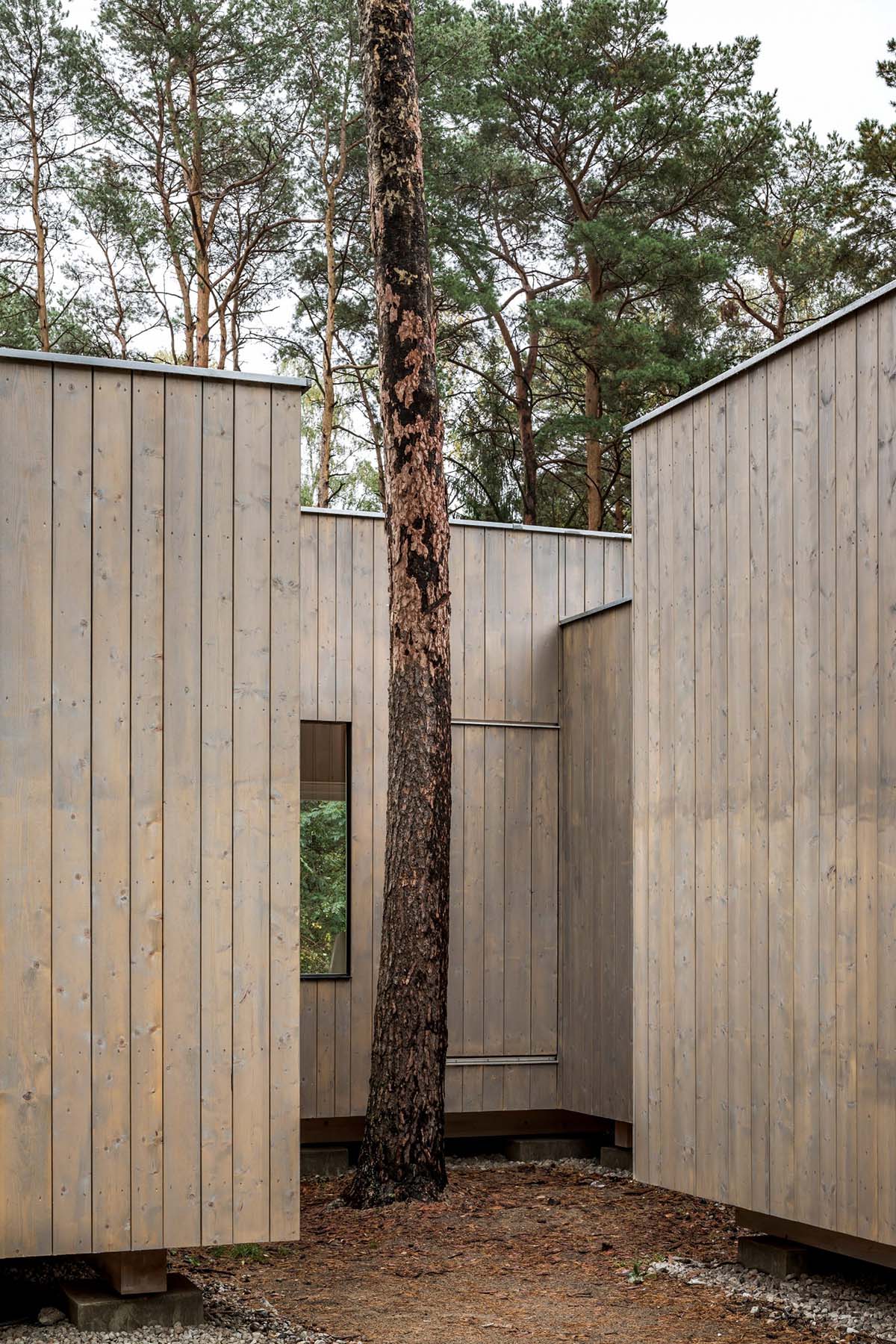
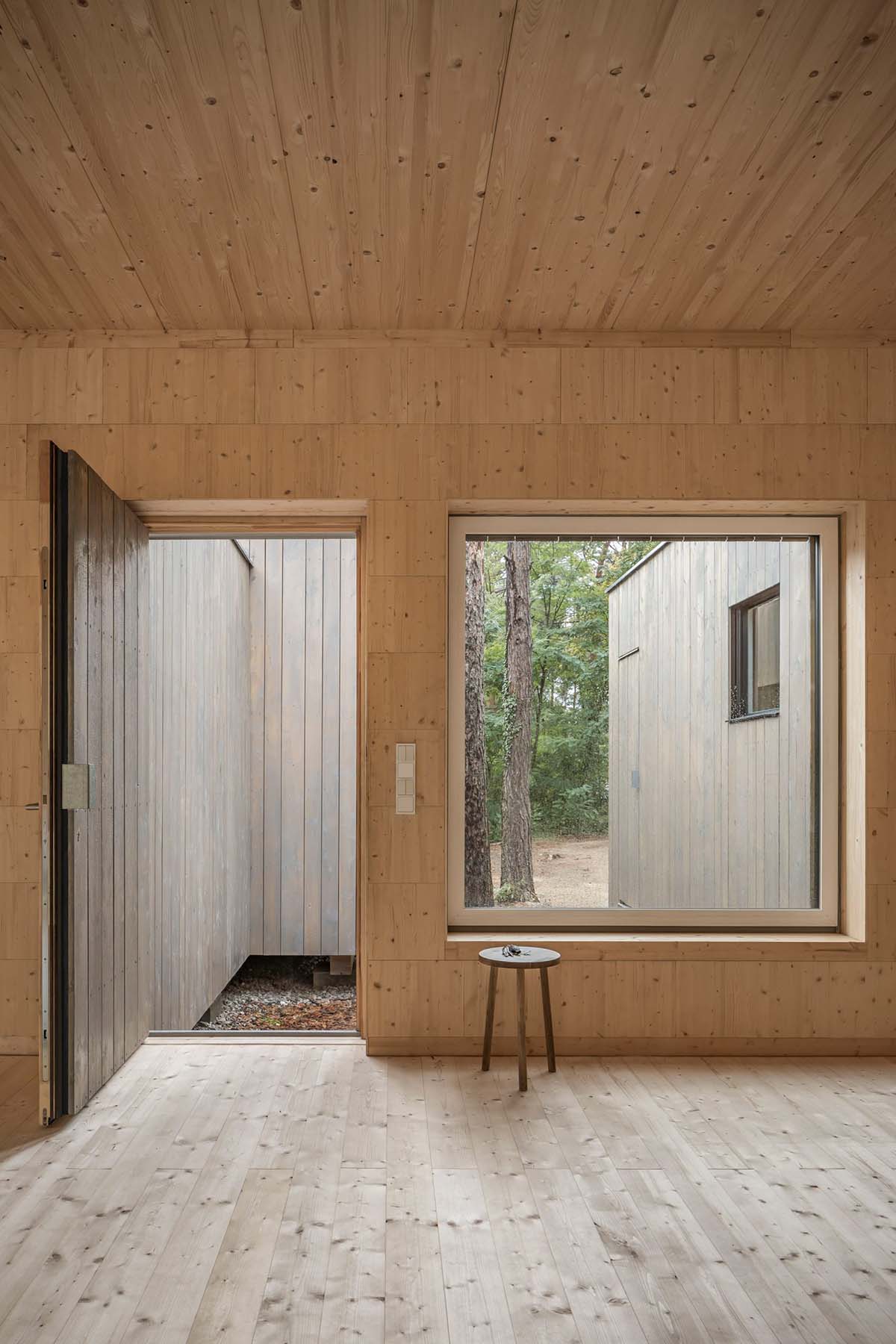
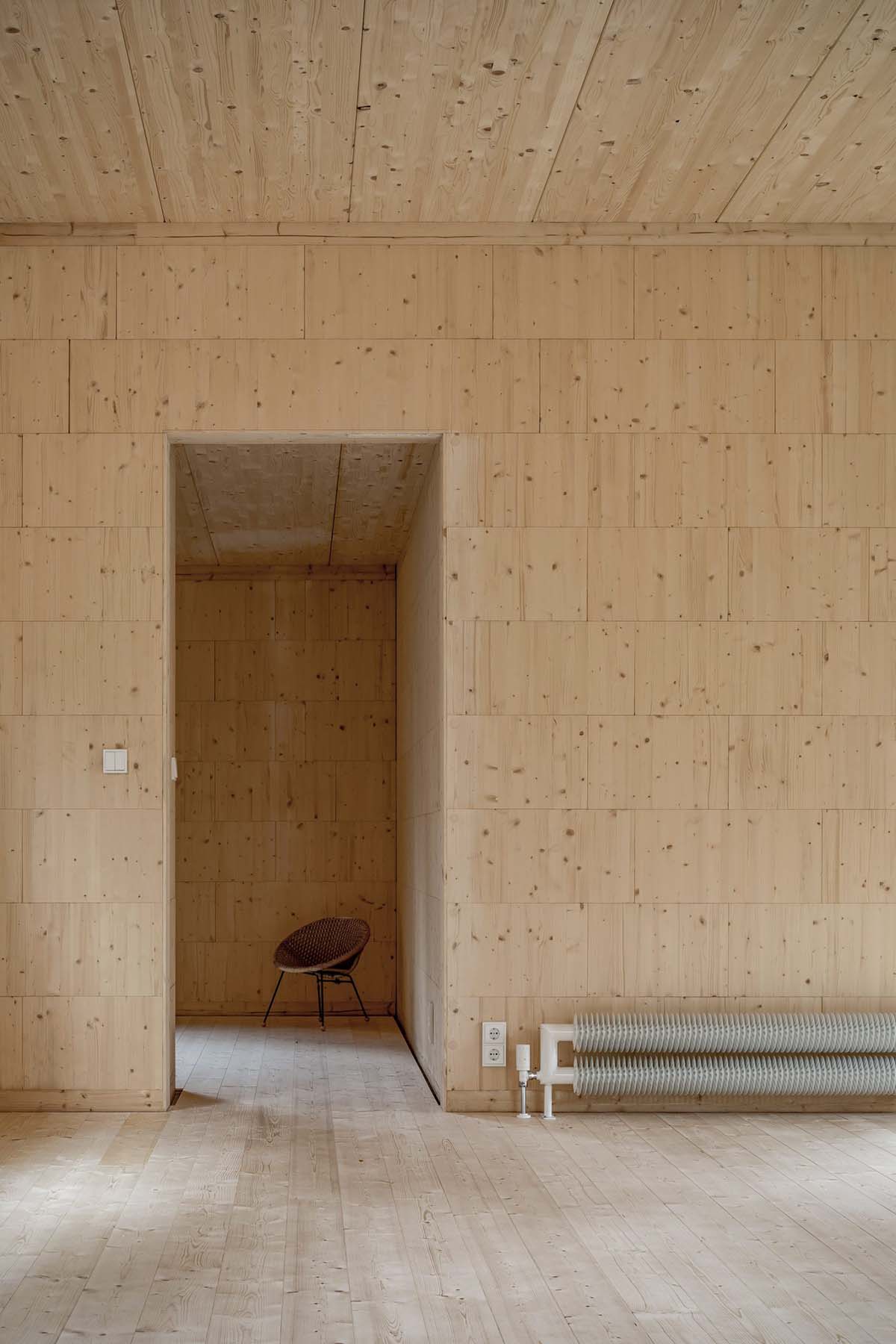
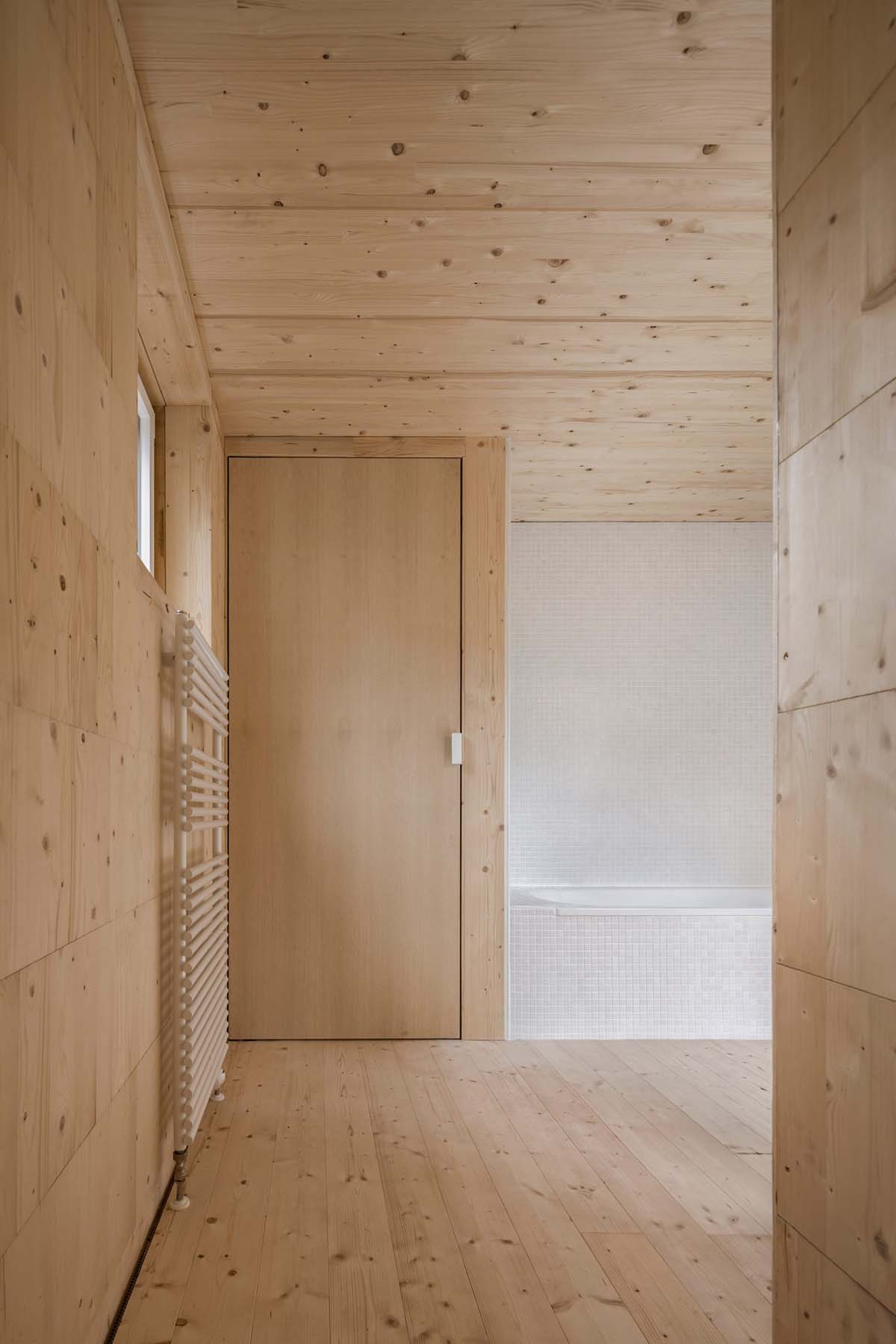
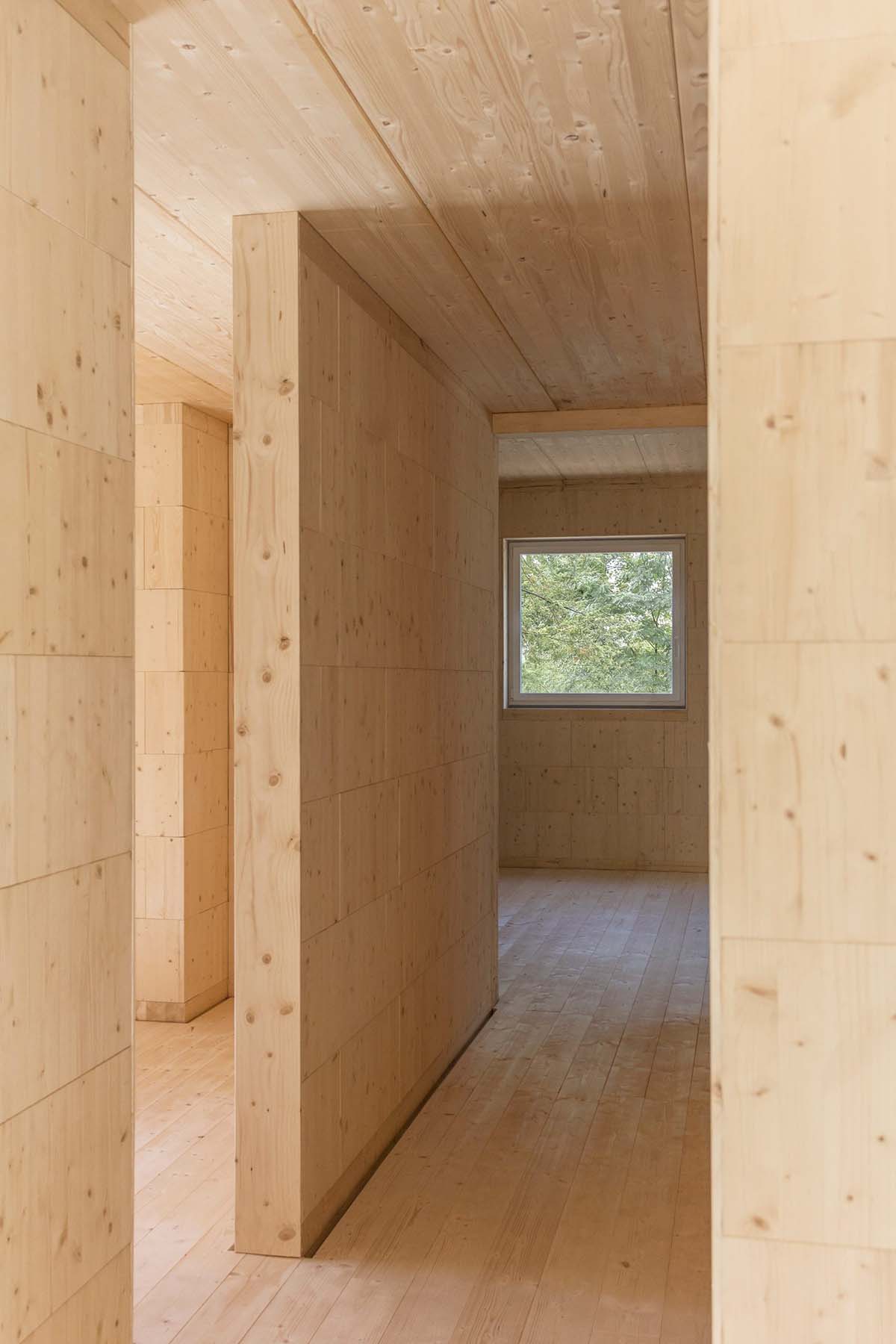
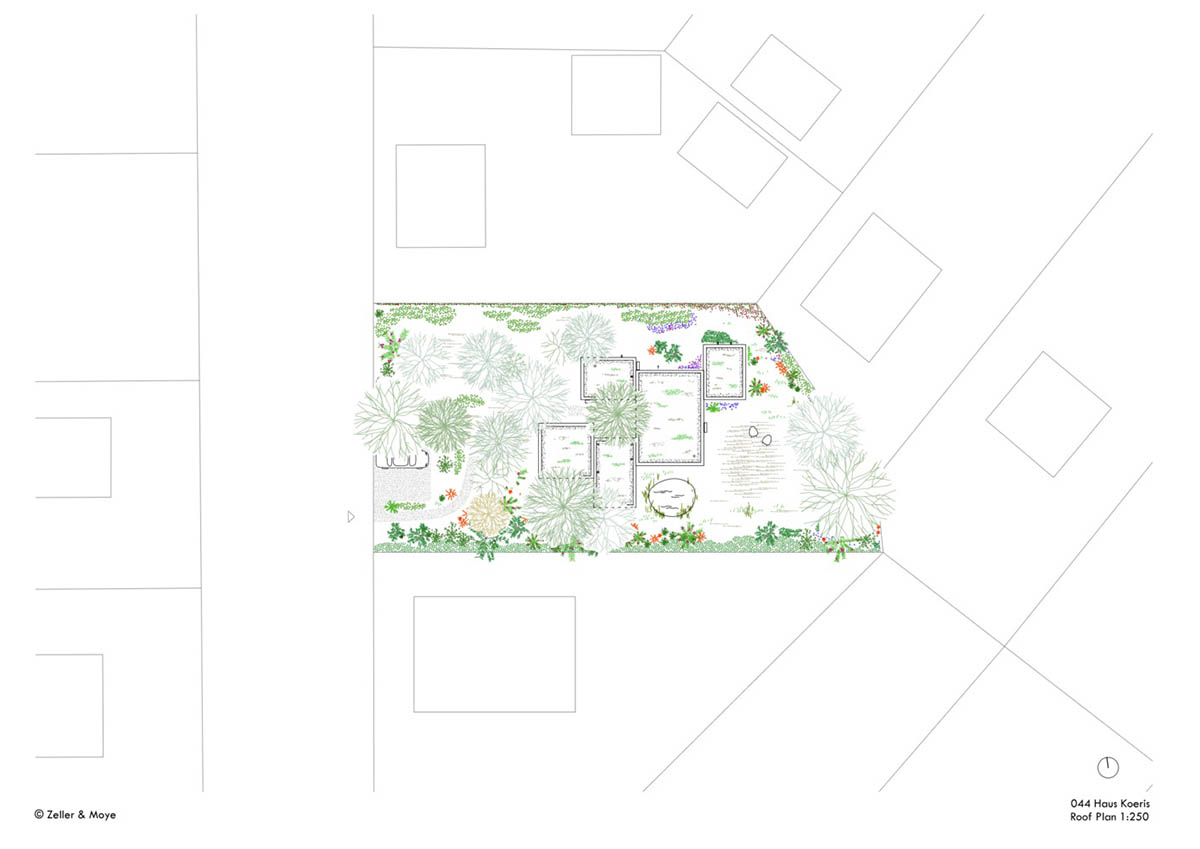
Site plan
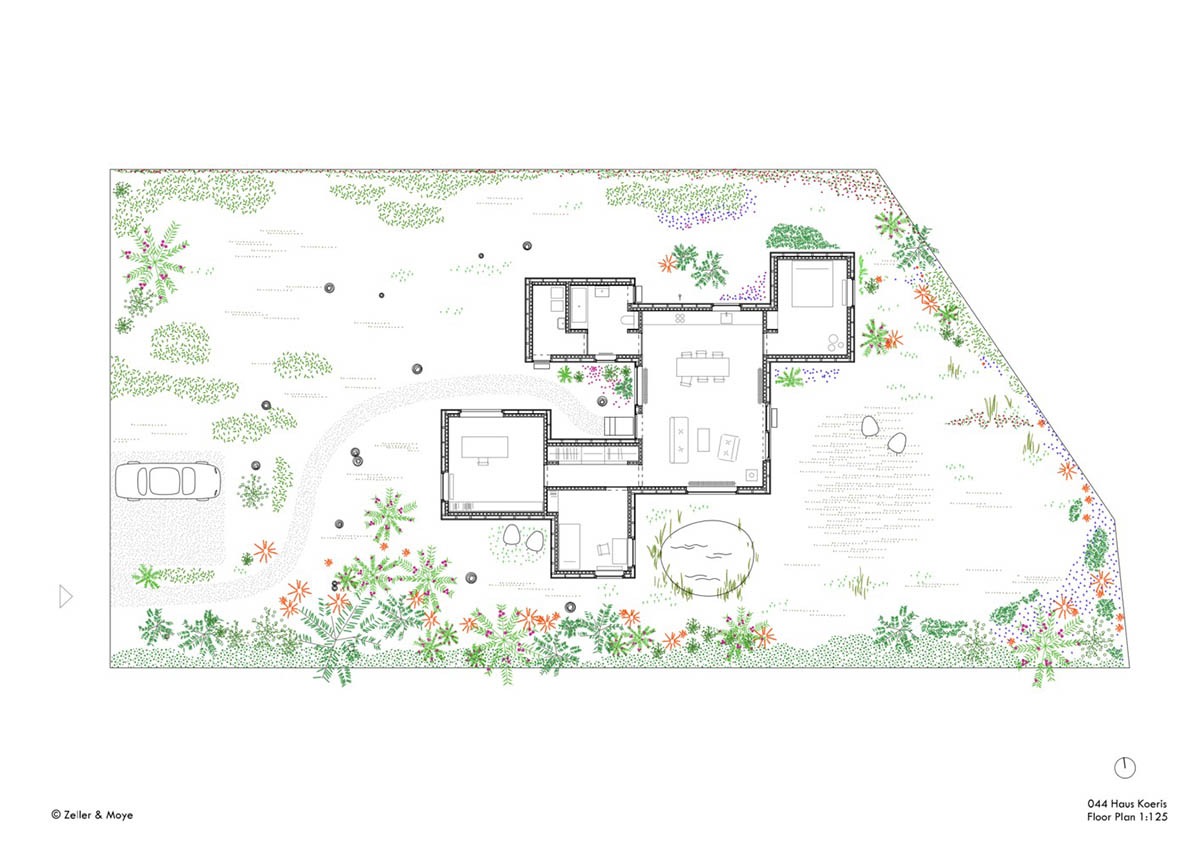
Floor plan

Roof plan
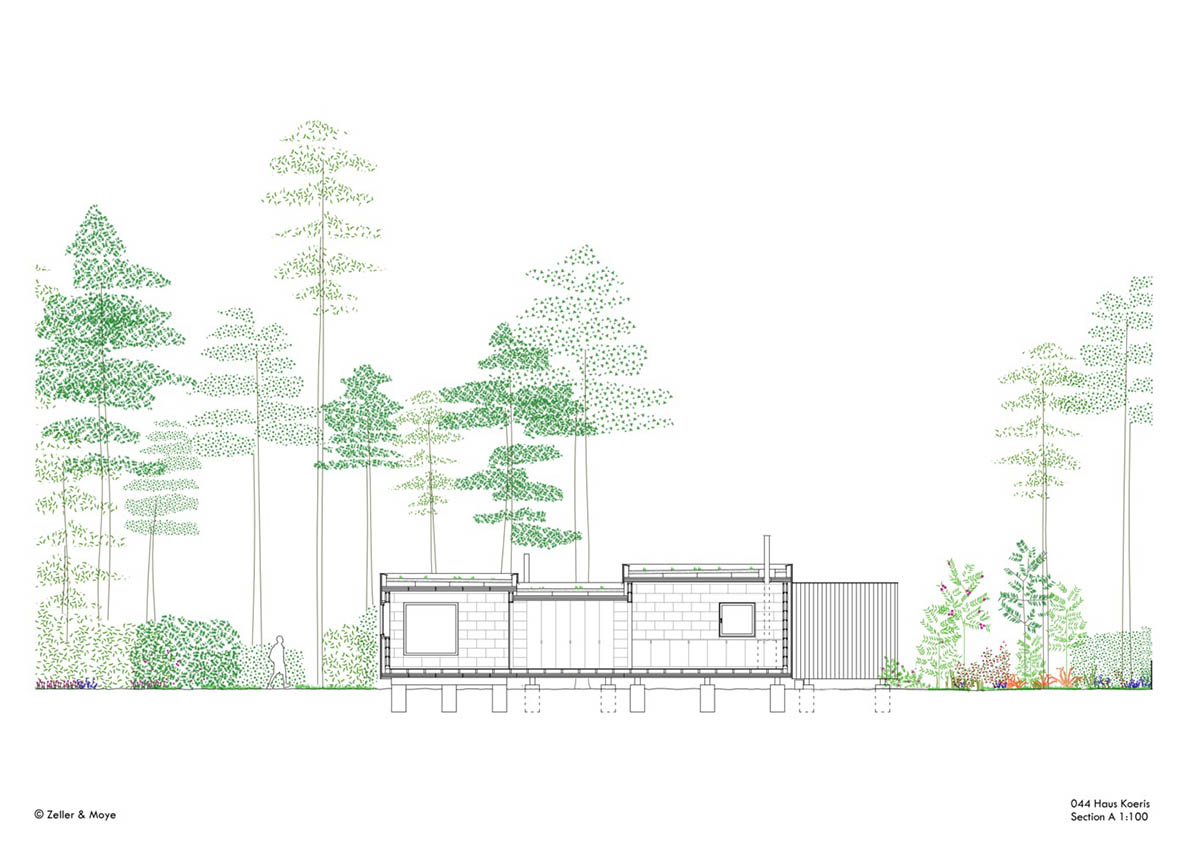
Section 1
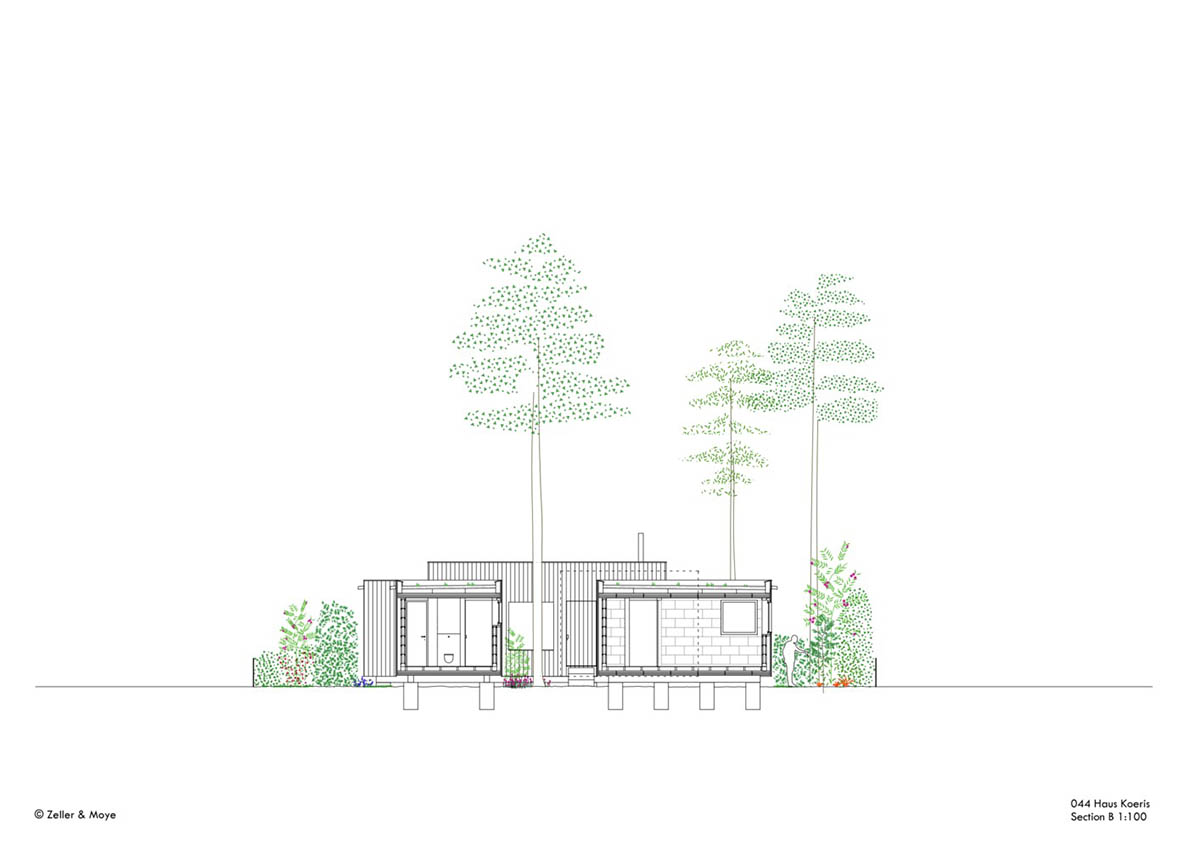
Section 2
Zeller & Moye was founded by Christoph Zeller and Ingrid Moye in 2013 as an architectural studio. The studio operates with an interdisciplinary and global approach. The firm has offices in Mexico and Berlin.
Zeller & Moye recently completed a new rural housing in Mexico.
Project facts
Project name: Koeris House
Architects: Zeller & Moye
Location: Klein Köris, Germany.
Size: 130m2
Date: 2020
All images © Cesar Bejar
All drawings © Zeller & Moye
> via Zeller & Moye
